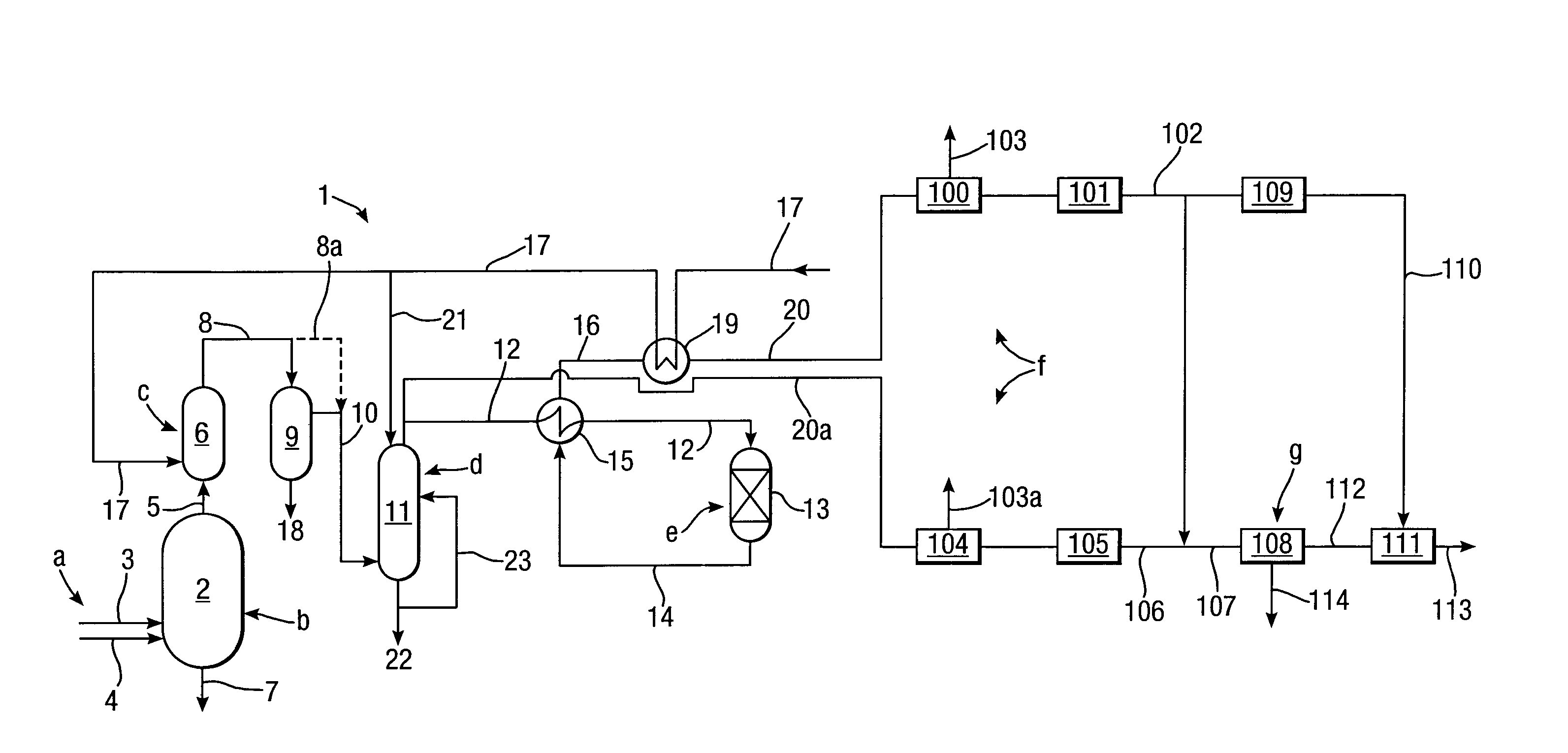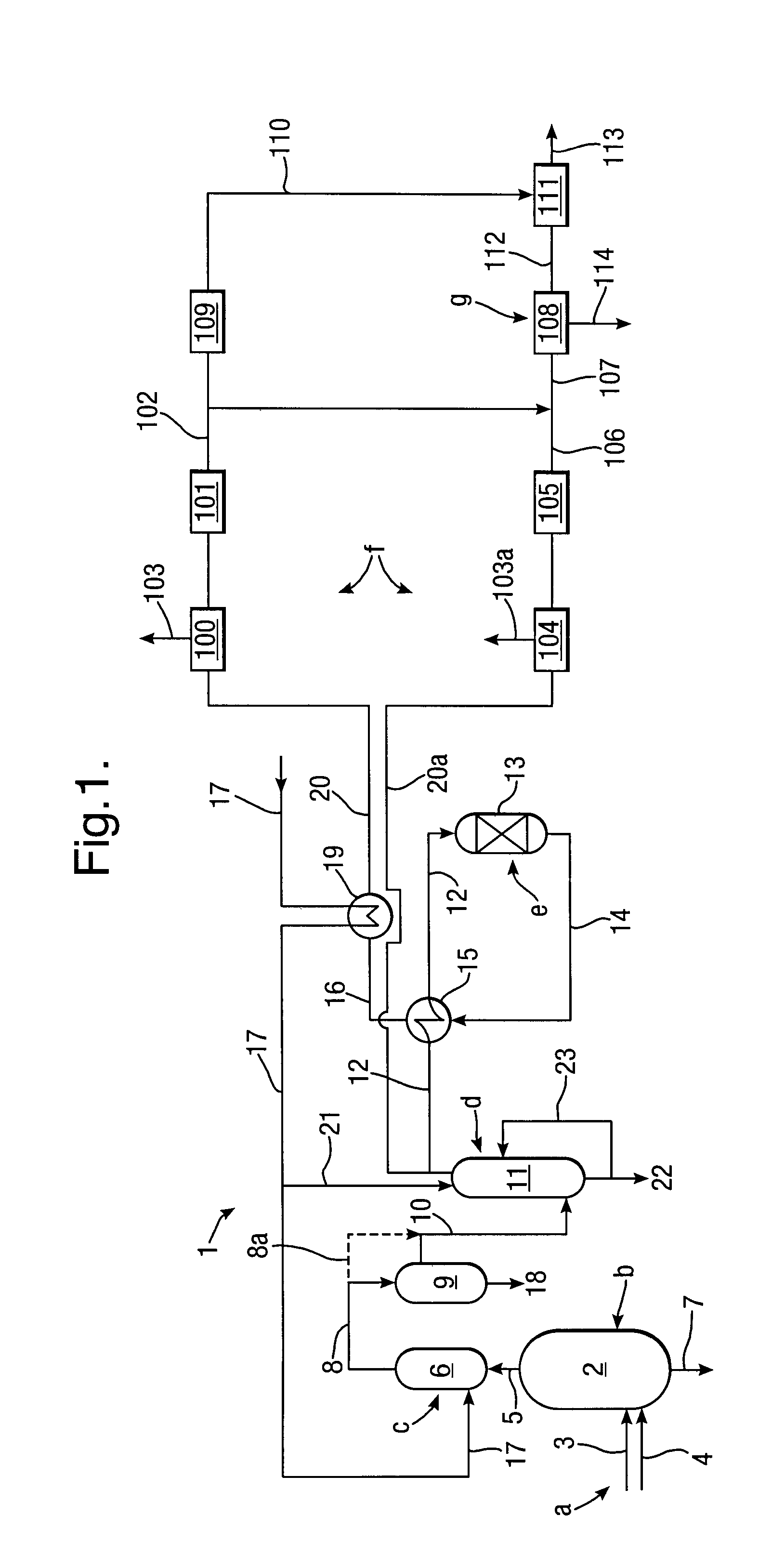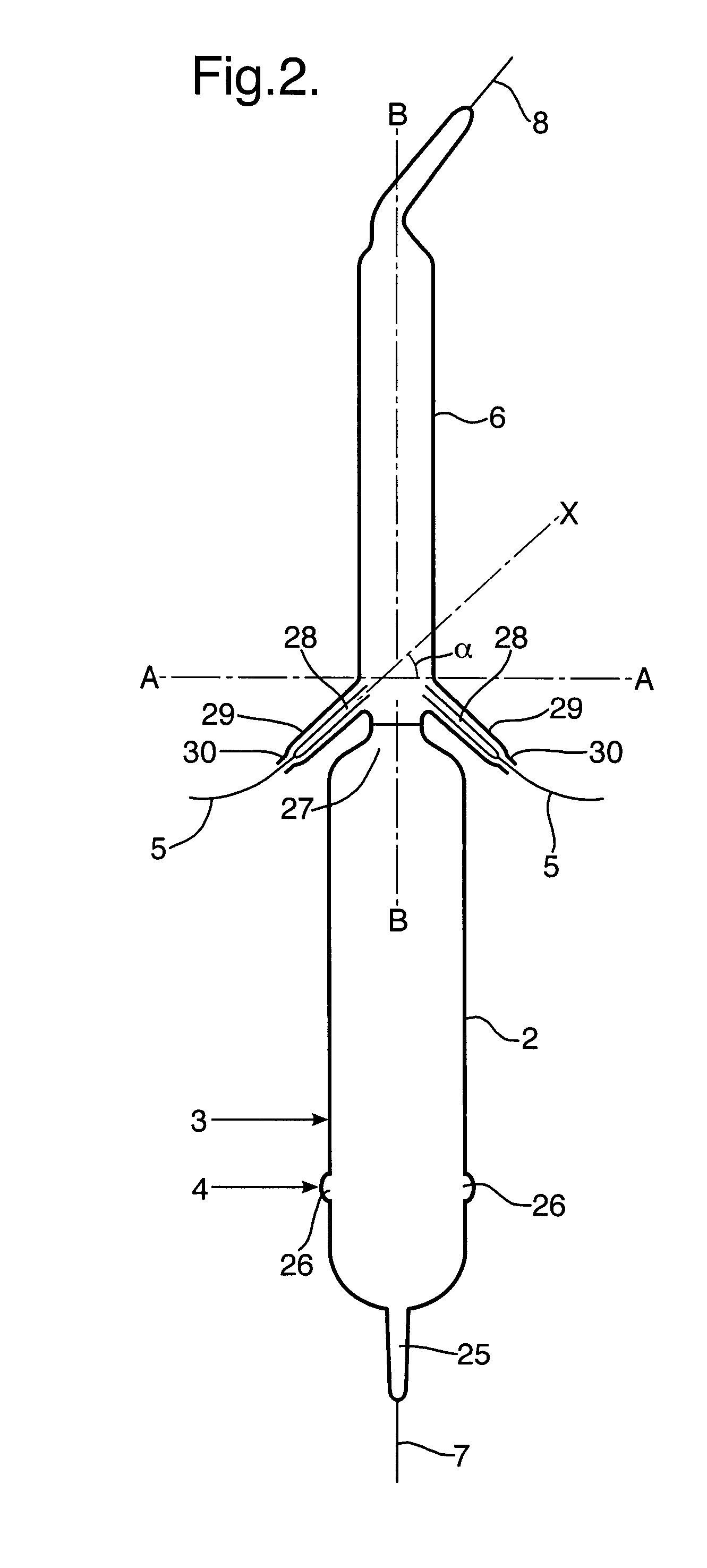Solid carbonaceous feed to liquid process
a technology of solid carbonaceous feed and liquid process, which is applied in the direction of gasifier mechanical details, combustible gas production, combustible gas purification/modification, etc., can solve the problems of heat exchanging surface, large complexity of design of said apparatus, and already complicated process
- Summary
- Abstract
- Description
- Claims
- Application Information
AI Technical Summary
Benefits of technology
Problems solved by technology
Method used
Image
Examples
example 1
[0099]A hot synthesis gas is obtained by performing a partial oxidation of a coal feedstock. The hot synthesis gas is quenched with recycled cold synthesis gas to obtain the gas having the properties and composition of stream 5 in FIG. 1. Table 1 further provides flow rates, properties and compositions of various streams in FIG. 1. This example shows that with the present process a synthesis gas composition can be prepared having a sufficient steam content to perform a water shift reaction.
TABLE 1Stream Number in FIG. 15178102112 + 20a22Temperature° C.899230425424230213 (*)212PressureBAR41454139453842Total Mass RateKG / SEC10322141142.238.3108.99.9Total Molar Comp. (%)H2O31.0100.046.346.0100.056.299.8H219.00.014.714.60.011.90.0CO40.30.031.431.20.025.40.0CO25.10.04.04.00.03.20.0H2S0.10.00.10.10.00.10.0N24.20.03.44.00.03.20.0Ar0.10.00.10.10.00.00.0Totals99.8100.0100.0100.0100.0100.099.8(*) prior to heat exchanger 15
PUM
| Property | Measurement | Unit |
|---|---|---|
| temperature | aaaaa | aaaaa |
| temperature | aaaaa | aaaaa |
| pressure | aaaaa | aaaaa |
Abstract
Description
Claims
Application Information
 Login to View More
Login to View More - R&D
- Intellectual Property
- Life Sciences
- Materials
- Tech Scout
- Unparalleled Data Quality
- Higher Quality Content
- 60% Fewer Hallucinations
Browse by: Latest US Patents, China's latest patents, Technical Efficacy Thesaurus, Application Domain, Technology Topic, Popular Technical Reports.
© 2025 PatSnap. All rights reserved.Legal|Privacy policy|Modern Slavery Act Transparency Statement|Sitemap|About US| Contact US: help@patsnap.com



